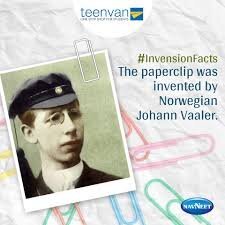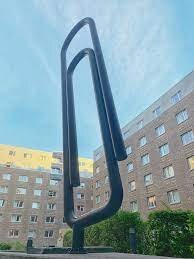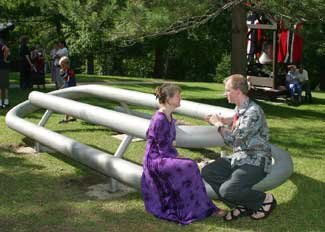
Symbol of Norwegian Unity and Resistance
The paperclip was a patriotic symbol of resistance in Norway during the Second World War.
Paperclips on lapels
As early as the fall of 1940, students at Oslo University began wearing paperclips on cuffs and lapels. It started as a grassroots campaign, but quickly became a widespread, silent and non-violent protest against the Nazi occupation of Norway. This small, almost invisible symbol was also an expression of unity and national pride, only understood by Norwegians.
On 25 September 1940 Reichskommissar Terboven had declared the King and the Government-in-Exile deposed, and outlawed all political parties other than the Nasjonal Samling (Quisling’s National Socialist party). All activities to support the Royal Family were forbidden. Though King Haakon VII stood firm in his resolve to fight until Norway was liberated, wearing symbols connected to the Royal family had become too obvious.
The paperclip also stood for the rejection of the ideology, with which the Nazis tried to infiltrate Norwegian culture and heritage. Next to sticking a single paperclip on a lapel, people also wore paperclip bracelets. The bracelets were a further symbol of Norwegians’ unity in face of adversity.

Vaaler the Paperclip inventor
Why the paperclip?
The paperclip as a resistance symbol is brilliant in its simplicity. The occupying power would certainly (at first) overlook it as an item of unimportance.
But there were other reasons apart from its insignificance.
Paperclips are used to bind things (paper), they are cheap, readily available and its inventor was a Norwegian by the name of Johan Vaaler. There is some dispute about the invention of this type of paperclip by Vaaler, but let’s not squabble over this. It worked for the Norwegians as the idea of their invention and a perfect tool as a subtle, non-violent form of resistance to carry every day.
“Vi holder sammen” = we are bound together

Paperclip statue
Verboten
At some point, the Germans understood the paperclip protest, and they forbade the wearing of the protest clip, labeling them a criminal violation. Still, Norwegians continued to show their patriotism and irritate their oppressors with their ‘innocent paperclip’.

Paperclip bench
After the War
The paperclip continues to be a symbol of pride for Norwegians connected to WW2 and, in many places, large paperclips were erected as statues. On 29 May, which is National Paperclip Day, Norway celebrates this day in particular.

My personal contribution
I love this form of protest. I think it’s brilliant and I don’t think I’ll ever be able to think of the simple paperclip as just a handy forged piece of metal.
 newest »
newest »
 newest »
newest »
 Great information. Thank you.
Great information. Thank you.









